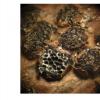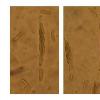
02-12-2025 18:59
This pair of ascos 2.5cm across were on recently b

02-12-2025 19:25
Buckwheat PeteHello, can anyone identify this hairy fungus growi

30-11-2025 12:53
 Edvin Johannesen
Edvin Johannesen
White short-stipitate apothecia found on thin twig

30-11-2025 10:47
 William Slosse
William Slosse
I recently found a collection of small Peziza sp.

27-11-2025 12:01
Thomas Læssøehttps://svampe.databasen.org/observations/10496727

27-11-2025 11:46
Thomas Læssøehttps://svampe.databasen.org/observations/10493918

17-09-2025 10:50
Heather MerryleesHi there!I am hoping for any advice on the identif

29-11-2025 08:40
 Andreas Millinger
Andreas Millinger
Hello,on a splintered part of a branch on the grou

28-11-2025 16:45
Nogueira HéctorNovember 23, 2025 Requejo de Sanabria (León) SPAI
Diatrype polycocca on Acer negundo ?
Alex Akulov,
28-09-2013 23:32
 Dear Friends,
Dear Friends,Today on the dead fallen branches of Acer negundo I have collected interesting Diatrype sample, looking like Diatrype polycocca. Asci are 8-sporous, long stipitate, the length of the sporiferous parts are 51-54 (single 70) micrometers, the width - (6.5) 7,1-10,6 micrometers, the length of stipes are 44-70 micrometers. Ascospores allantoid, smoky-brown, 10,9-11,9 x 2.2-2.4 microns.
Did you know this species?
According available at me information, this species was described on Acer opaca from Switzerland and recently was found on Acer platanoides in Poland and on ? Cornus in France.
Waiting for your answer,
Alex
Paul LEROY,
03-10-2013 22:58
Re : Diatrype polycocca on Acer negundo ?
Hello Alex,
Apparemment cette Diatrypaceae pourrait plutôt être: Eutypella leprosa. Cette espèce est
très commune sur arbres feuillus variés et son entostroma blanc conduit plutôt à chercher
vers le genre Diatrype. L'appareil apical est J+ mais est souvent peu visible, même après
prétraitement KOH.
Cordialement
Paul
Apparemment cette Diatrypaceae pourrait plutôt être: Eutypella leprosa. Cette espèce est
très commune sur arbres feuillus variés et son entostroma blanc conduit plutôt à chercher
vers le genre Diatrype. L'appareil apical est J+ mais est souvent peu visible, même après
prétraitement KOH.
Cordialement
Paul
Alex Akulov,
06-10-2013 15:43

Re : Diatrype polycocca on Acer negundo ?
Paul, merci beaucoup pour vos conseils!

